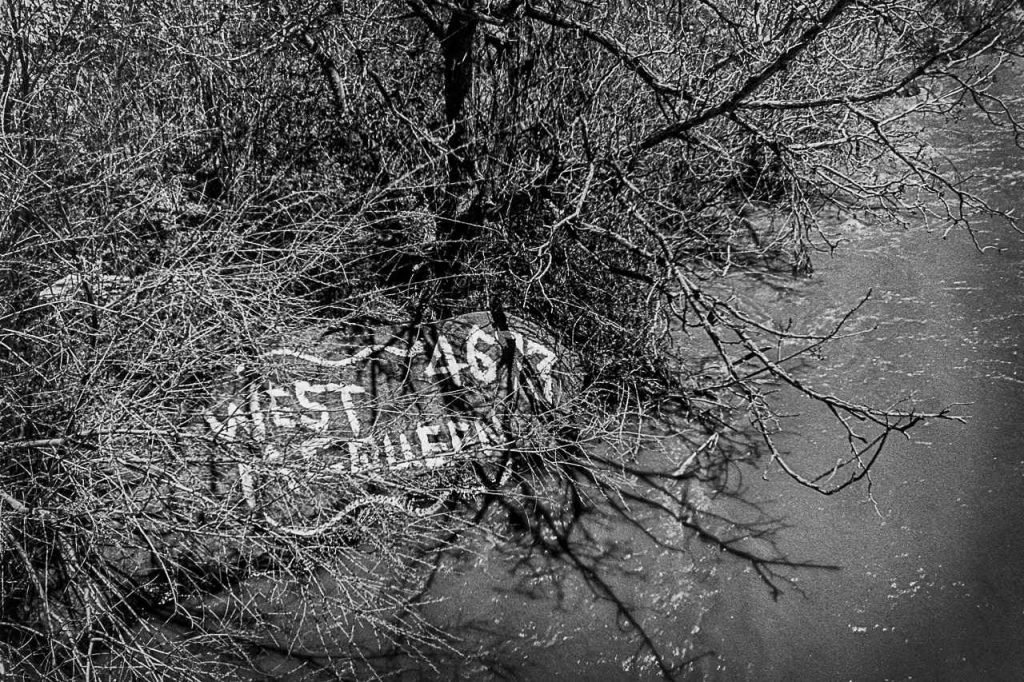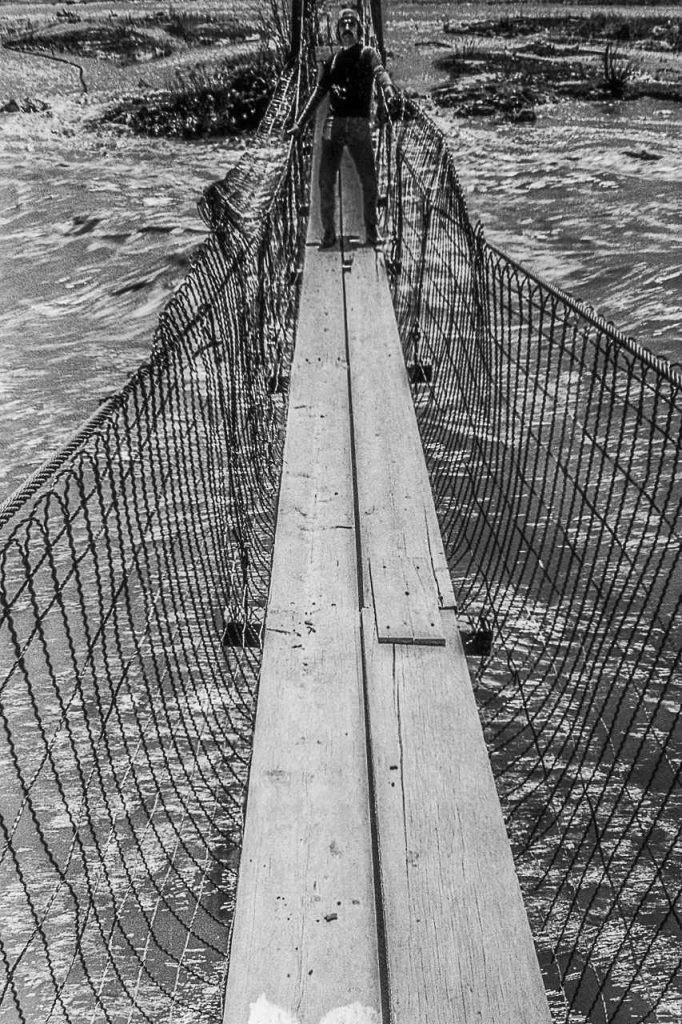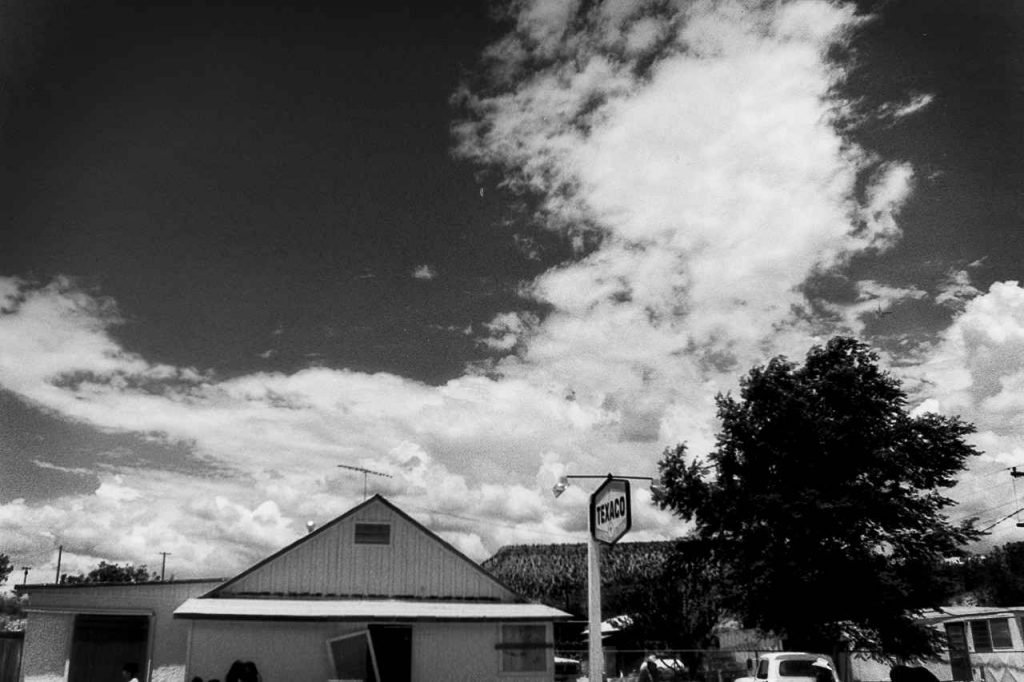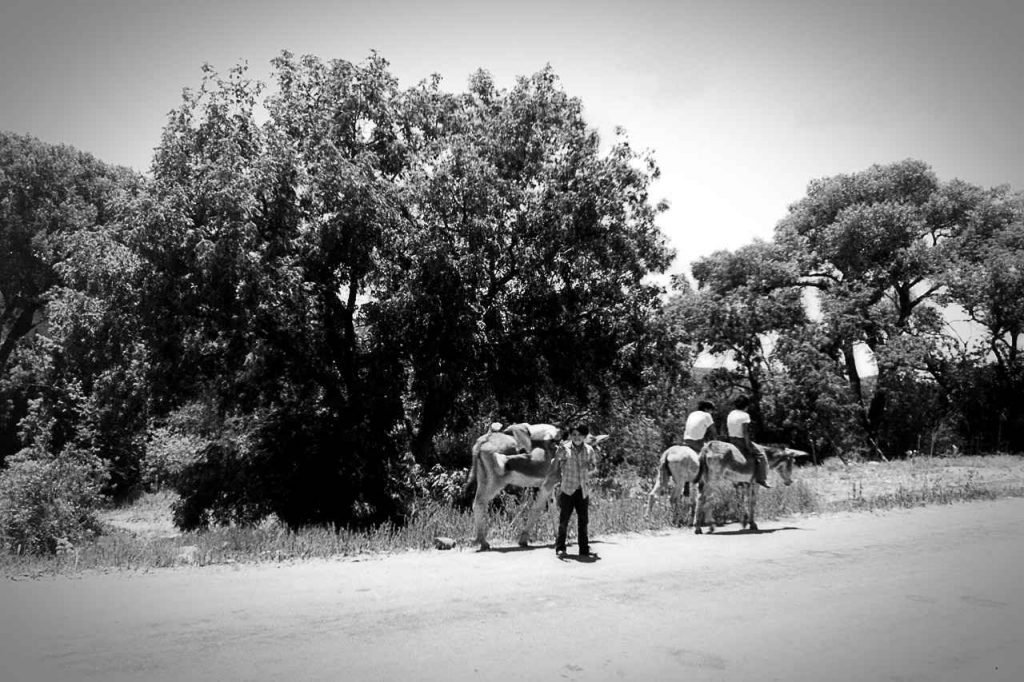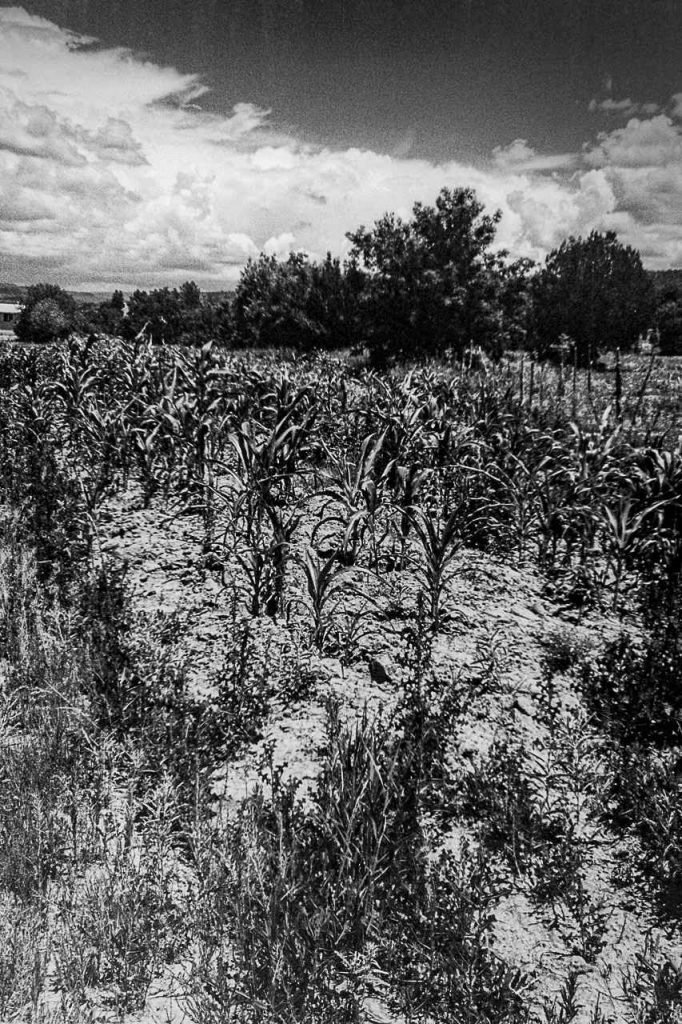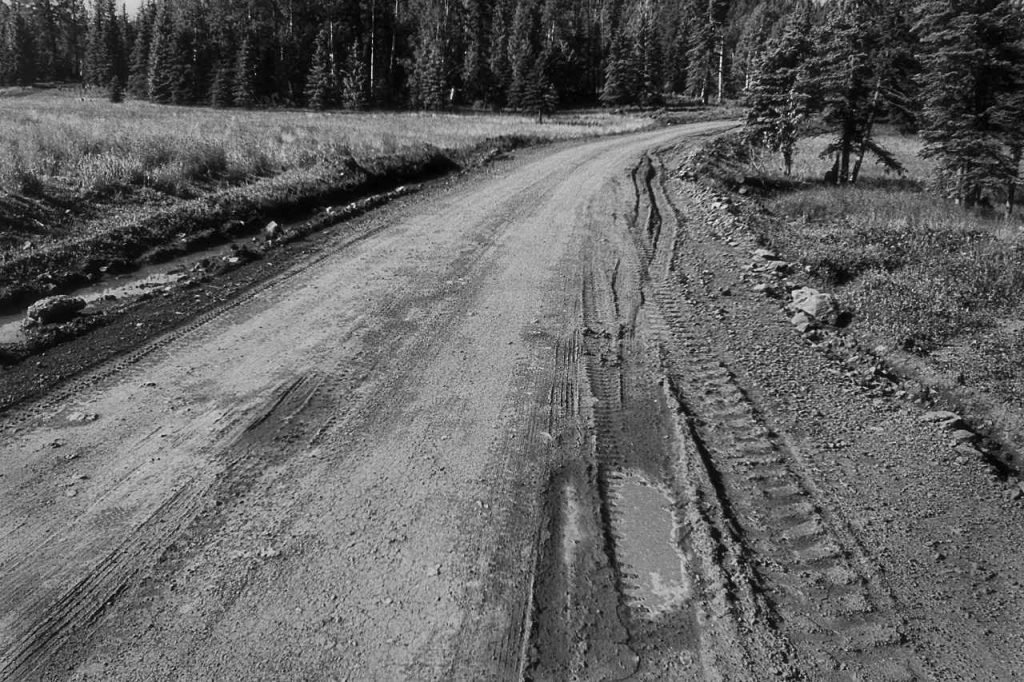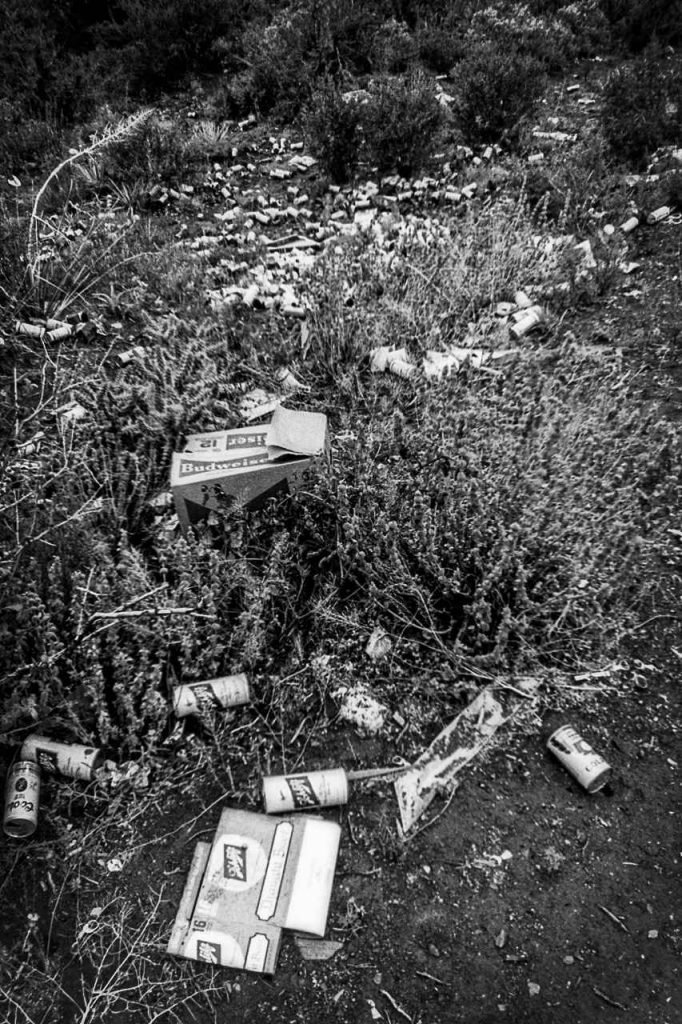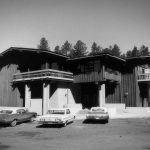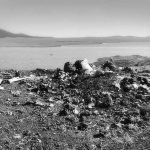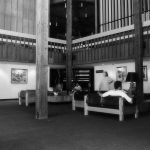The Reservation was sparsely populated; about 13 or 14,000 people occupied 1.6 million acres (some 2600 square miles). Many were clumped in small settlements, about eight or nine distinct communities, and some only had a trading post with a gas pump, or less. Some Tribal members lived in shacks and cabins, often still using the traditional wickiup (think “wigwam”) nearby. Scattered throughout the scrub plateaus and denser forest areas — elevation range was about 3000 feet to over 11,000 feet — would be virtually hidden cabins. Many homesteads had a few grazing animals (overgrazing, incidentally, was a often-cited problem) and a plot of vegetables and a patch of corn, always close to one of the many sources of water on the Reservation. (If I recall, it was said that something like 400 or 500 miles of streams and creeks flowed throughout the Reservation, and as we have previously pointed out, several rivers and very large lakes were to be found at various elevations.) Accompanied by our Apache translator/interviewers, we visited a number of families — sometimes single-parent — with several children and elders living in one or two rooms. Traversing side roads often required 4WD. Roadsides were often littered with trash, particularly beer cans.
During our stay, the Apache Tribe was finishing construction on a new resort with lodging, dining and ski facilities at the high elevation (over 9000 feet) Sunrise Lake.
- Sunrise Lake Viewed From The Construction Area
- Inside the Lodge
[previously undiscovered negatives dated 1972-74 originally scanned and published 1/20/2016]
NEXT: A Calf Is Born









